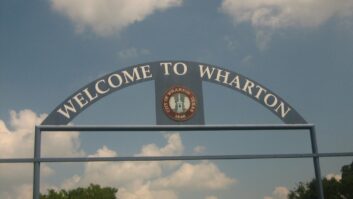FCC Gives Reprieve to AM Daytimers
May 1, 2007 12:00 PM, By Harry Martin
AM daytimers enjoyed a reprieve from pre-sunrise/post-sunset power reductions that might otherwise have been imposed on them on March 11, 2007. The reprieve may only be temporary, however; come November and the return of standard time those reductions may return.
By way of background, to prevent interference to nighttime AM service many AM stations are forbidden to operate at night. Eventually the commission concluded that such daytimers could be allowed to operate with low power during pre-sunrise (and, sometime, later, post-sunset) hours without causing interference. The commission calculated the permissible power levels on its own and notified affected stations of their ability, limited though it was, to operate in non-daylight periods. Notations of the pre-sunrise/post-sunset authorizations were added to the licenses of the stations that opted to take advantage of the opportunity.
In 2005 Congress decided to expand daylight-saving time (DST). Accordingly, the start date for DST was moved to the second Sunday in March and the end date to the first Sunday in November. This shift in times, the FCC decided, meant it had to make adjustments to the operating times of all daytime AM stations with pre-sunrise or post-sunset authorizations.
In the context of the existing pre-sunrise and post-sunset authorizations, the change required to accommodate DST would not have been difficult. All the commission had to do was issue a public notice reminding licensees to adjust their pre-sunrise or post-sunset times to correspond to the readjusted DST times. But the commission decided that this would be a good time to tie up loose ends. In particular, the FCC had revised a number of its nighttime protection standards in the years since the pre-sunrise/post-sunset levels had first been established. As a result, those levels do not necessarily conform to the current standards. The commission set about re-calculating the appropriate levels to reflect current nighttime interference protection standards and to make the new values effective on March 11, along with the changes resulting from early implementation of DST.
Through a public notice issued on March 1, the commission tried to do just that. The notice said that the staff had recalculated the permissible power levels pursuant to the current rules, and that all licensees with pre-sunrise/post-sunset authorizations should check the FCC’s website for the updated values. It did not take long before licensees complained. As it turned out, unanticipated computer errors led to erroneous power levels for a number of stations.
But the commission’s staff reacted promptly. The commission issued a second public notice, on March 7, in which it announced the immediate suspension of the use of the recalculated values. The second notice told AM stations that they should continue to use the powers that they had been using all along (but with appropriate timing adjustments for DST). A further notice is supposed to be issued later this year � once the computer bug has been corrected and accurate recalculations completed.
Of course, when the correct recalculations are made, many AM stations will find themselves with considerably less non-daytime power than they have now.
Dateline
Radio stations in Arizona, District of Columbia, Idaho, Maryland, New Mexico, Nevada, Utah, Virginia, West Virginia and Wyoming must file their biennial ownership reports by June 1.
Also by June 1, radio stations in the following states must place their annual EEO reports in their public files and post them on their websites: Arizona, DC, Idaho, New Mexico, Maryland, Michigan, Nevada, Ohio, Utah, Virginia, West Virginia and Wyoming.
Martin is a past president of the Federal Communications Bar Association and a member of Fletcher, Heald & Hildreth, Arlington, VA. E-mail[email protected].










